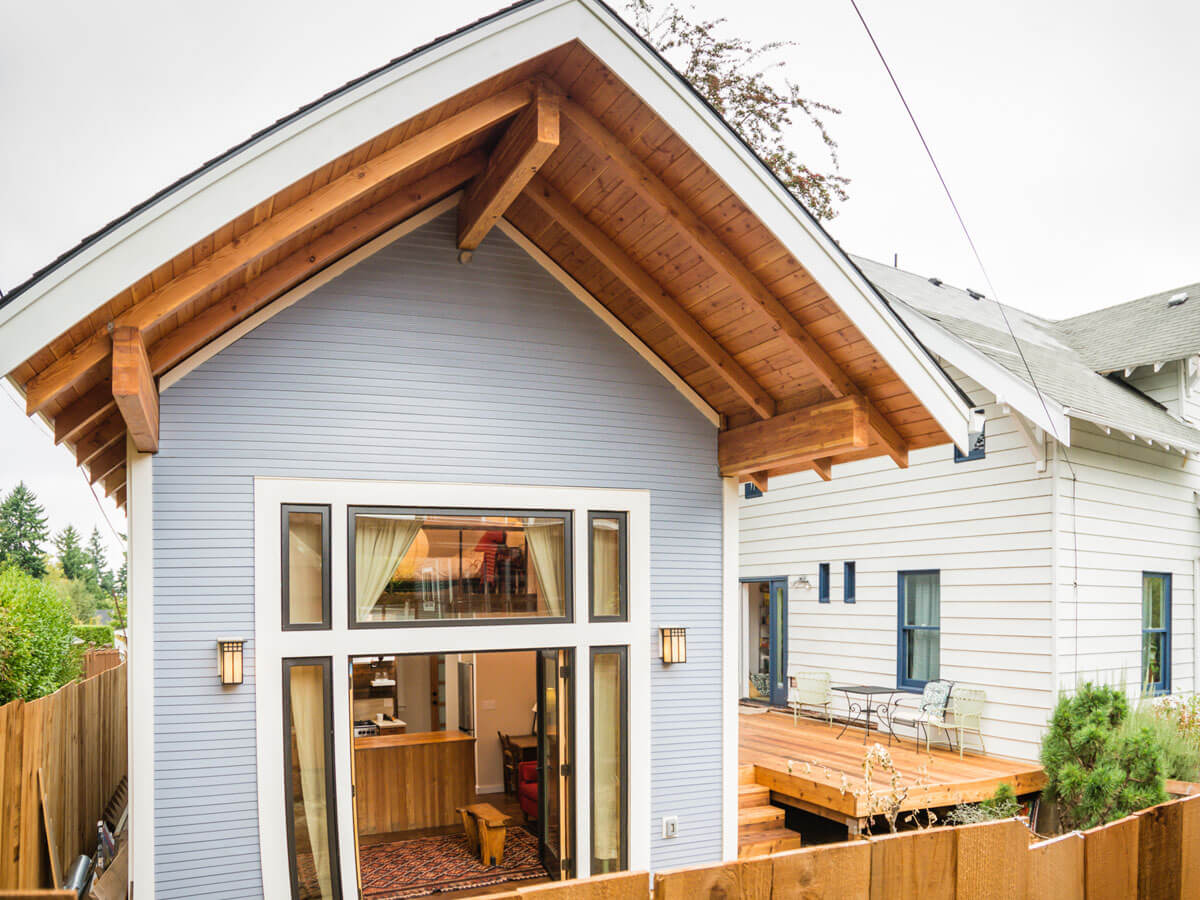So you’ve heard about ADU, but what is a DADU?
DADU is a type of ADU, or accessory dwelling unit, for the uninitiated. The D stands for detached, meaning that the DADU is a standalone structure separate from the main home. Let’s talk about DADU, its unique advantages, and how it can maximize the usable space in your Seattle lot.
Key Features of a DADU
DADU stands for “detached accessory dwelling unit.” However, one can’t just call any detached structure a DADU. For a standalone structure to be called a DADU, it should satisfy these three criteria:
- It should be a separate building. The structure has to be a unit independent from the main dwelling to count as a DADU. It should have no physical connection to the primary residence apart from sharing the same lot.
- It has to be an independent dwelling unit. A DADU is a self-contained habitat. It may have its own bath, bedroom, and kitchen—practically everything the occupant needs for comfortable living. The idea is that the resident does not need to rush to the main house to access any basic amenities.
- It must be an additional living space. A DADU is designed as an additional living quarter for the homeowner, subject to whatever additional purpose they have in mind. Although it is separate from the primary residence, it remains part of the property. In essence, it simply expands the overall habitable area.
Basically, a DADU is a separate, self-sufficient residential building within the same parcel as the main house. The keyword here is “building,” which is a permanent structure with foundations. The term cannot be used to denote a camper or recreational vehicle, which are mobile homes considered by most local governments to be vehicles subject to parking and car ownership rules.
Additionally, a DADU may need to follow local building codes and zoning regulations to be legally called one. Otherwise, the city government might just treat it as an illegal accessory structure. It could incur penalties or even be marked for removal.
In Seattle, the Seattle Department of Construction & Inspections (SDCI) require homeowners to submit permits before they can start building their DADU. This ensures compliance with current residential regulations, as well as relevant construction code requirements. To make things easier, the SDCI website offers pre-approved DADU plans, all of which meet the three criteria we’ve previously outlined.
What is the difference between a DADU and an ADU in Seattle?

In Seattle, the SDCI defines the ADU as a separate living space within the same property as the primary residence. An ADU may be attached to the main house, or is independent from it. A DADU, on the other hand, is defined By SDCI as a type of ADU that is detached from the primary residential structure.
Now, the existence of a detached ADU implies that of its attached counterpart. The proper term here is the attached accessory dwelling unit or AADU. It is physically connected to the main residence, directly expanding the house’s living space. As with the DADU, the AADU’s construction will need to go through Seattle’s rather straightforward permit process to be legally called as such.
How Much Does a DADU Cost In Seattle?
Building a DADU in Seattle can cost between $350,000 and $650,000. This is not a fixed range, as the design’s complexity and your choice of materials can significantly impact the final price. To be more specific, the actual cost depends on the following factors:
- Permits. This includes city permit fees and payment to your professional consultants. In Seattle, you will need to work with experts such as architects, geotechnical engineers, and structural engineers to produce the necessary reports proving the feasibility of your DADU project.
- Construction. This involves laying down the foundations, building the frame, walls, roofing, windows, doors, and exterior finishes. The materials used and construction techniques employed, among others, are the main factors that drive the cost.
- Interiors. This refers to all the work done inside the dwelling. It includes cosmetic finishes and functional features, including lighting, storage, the baths, and the kitchen.
- Utilities. This covers the unit’s electrical network, plumbing, HVAC systems, and gas line connections. You will have to work with professionals in the installation of these systems, and their services are not inexpensive.
Is a DADU a Good Investment?
A DADU could be a good investment, even if it’s built as a vanity project. There are several good reasons why you should consider building one:
- Increased property value. ADUs make any property more attractive to buyers, thanks to their potential for rent. Homes with DADU are especially sought-after in Seattle, often selling at premium prices in the real estate market.
- Additional income stream. Housing is in high demand in a city as crowded as Seattle. As such, putting your DADU up for rent is not only sensible; it also addresses the local housing shortage while providing you with an extra source of income.
- Multi-generational housing. You can use your DADU to house aging parents, as this is far cheaper than sending them to a nursing home. Adult children who need to return home can also use the space as a temporary residence. The DADU’s detached nature translates to much-needed privacy for all the parties involved, while its proximity to the main residence allows for mutual care and support.
- Versatile space. A DADU does not have to be fully residential in nature. When idle, it can be used as storage. Otherwise, it can be used as a recreational space, private office, or a guest home, to name a few. This versatility means the unit sees use in the long run, adapting as your needs change.
Should You Build a DADU?
If you have the means to build and the patience for government paperwork, a DADU could make a lovely addition to your home. It not only expands your existing living space, but also provides you with a highly adaptable space that you can use for whatever purpose. Whether you put it up for rent or use it to justify your home’s resale price tag, building a DADU is definitely worth it.

